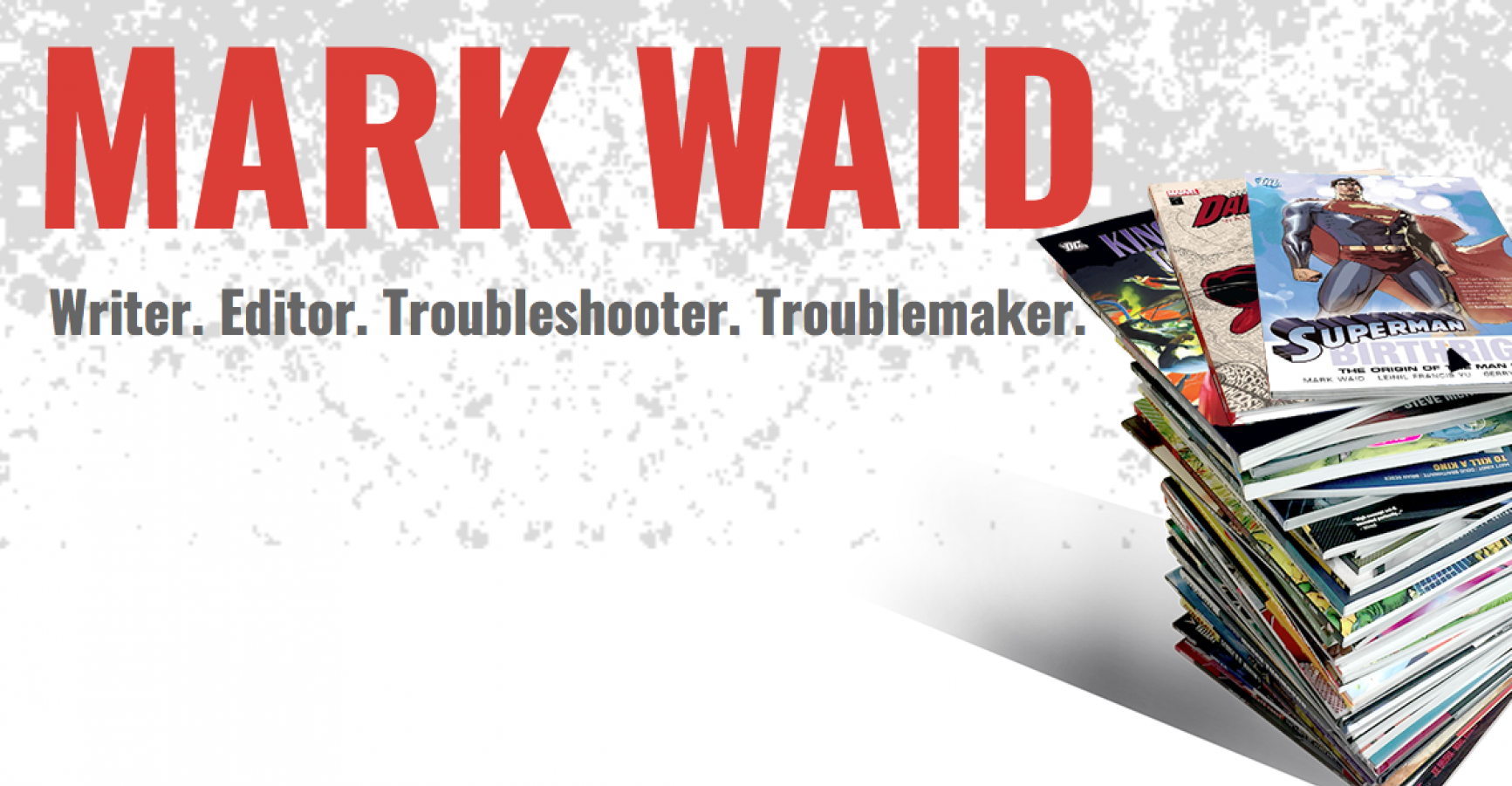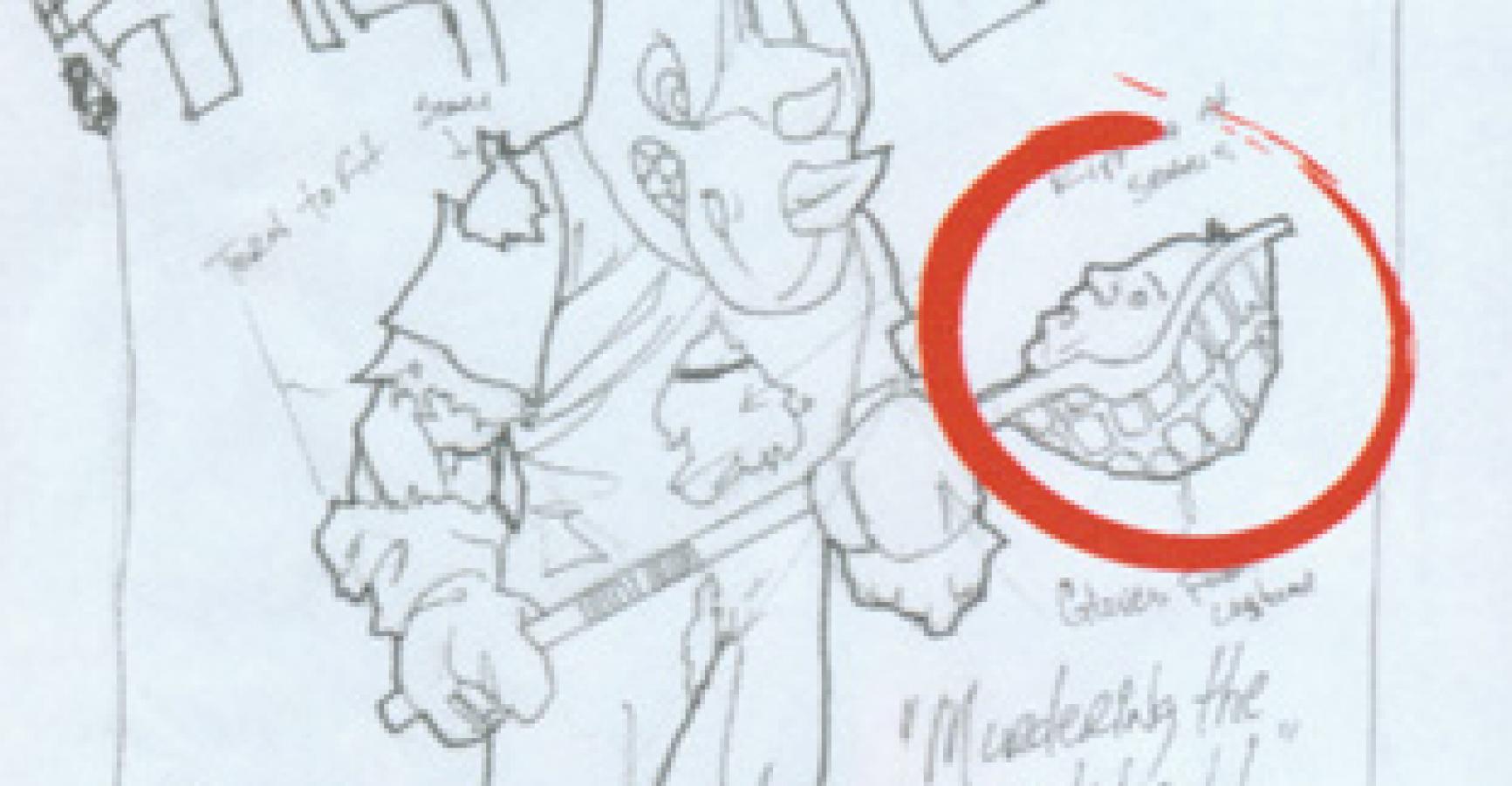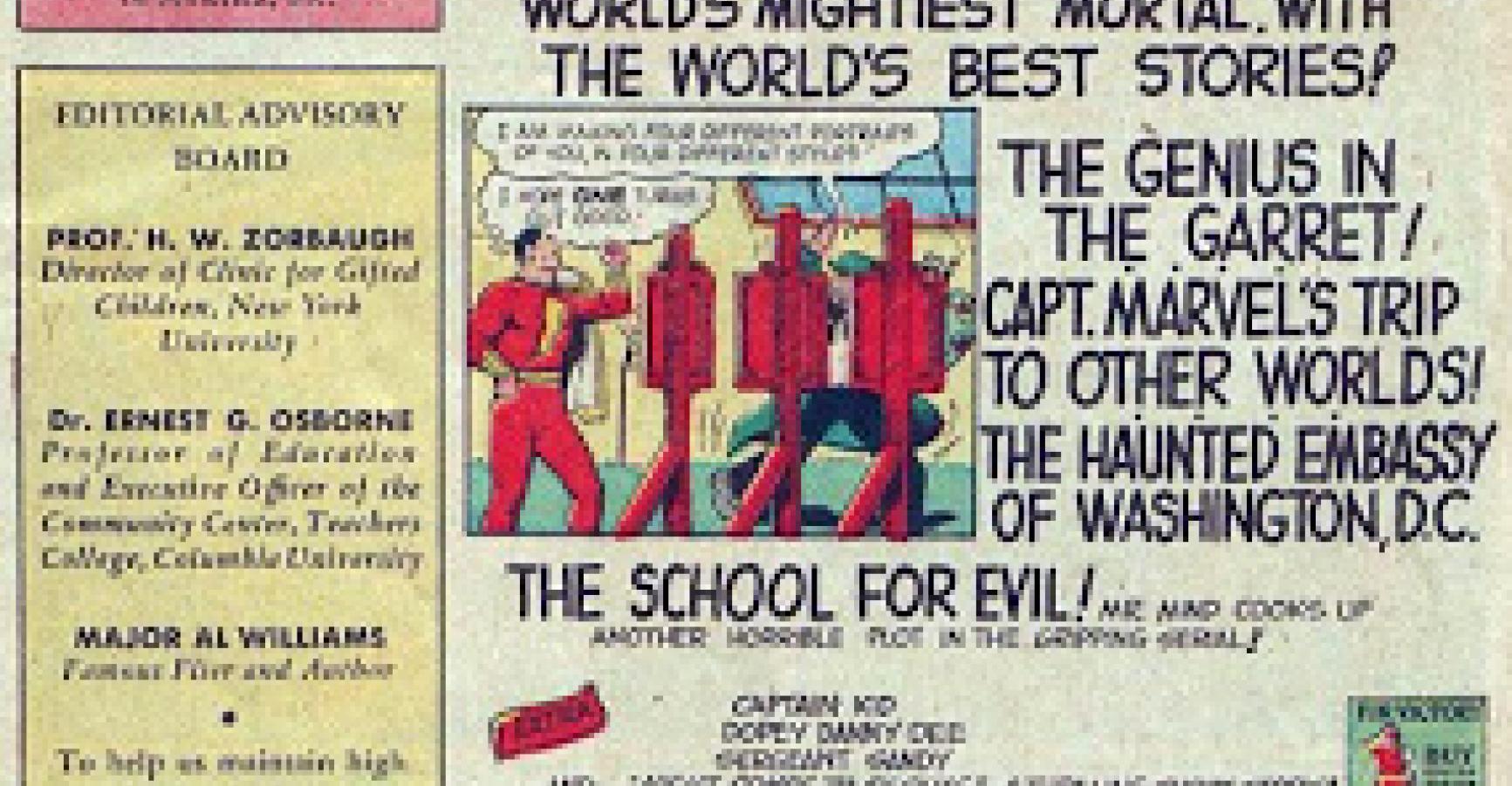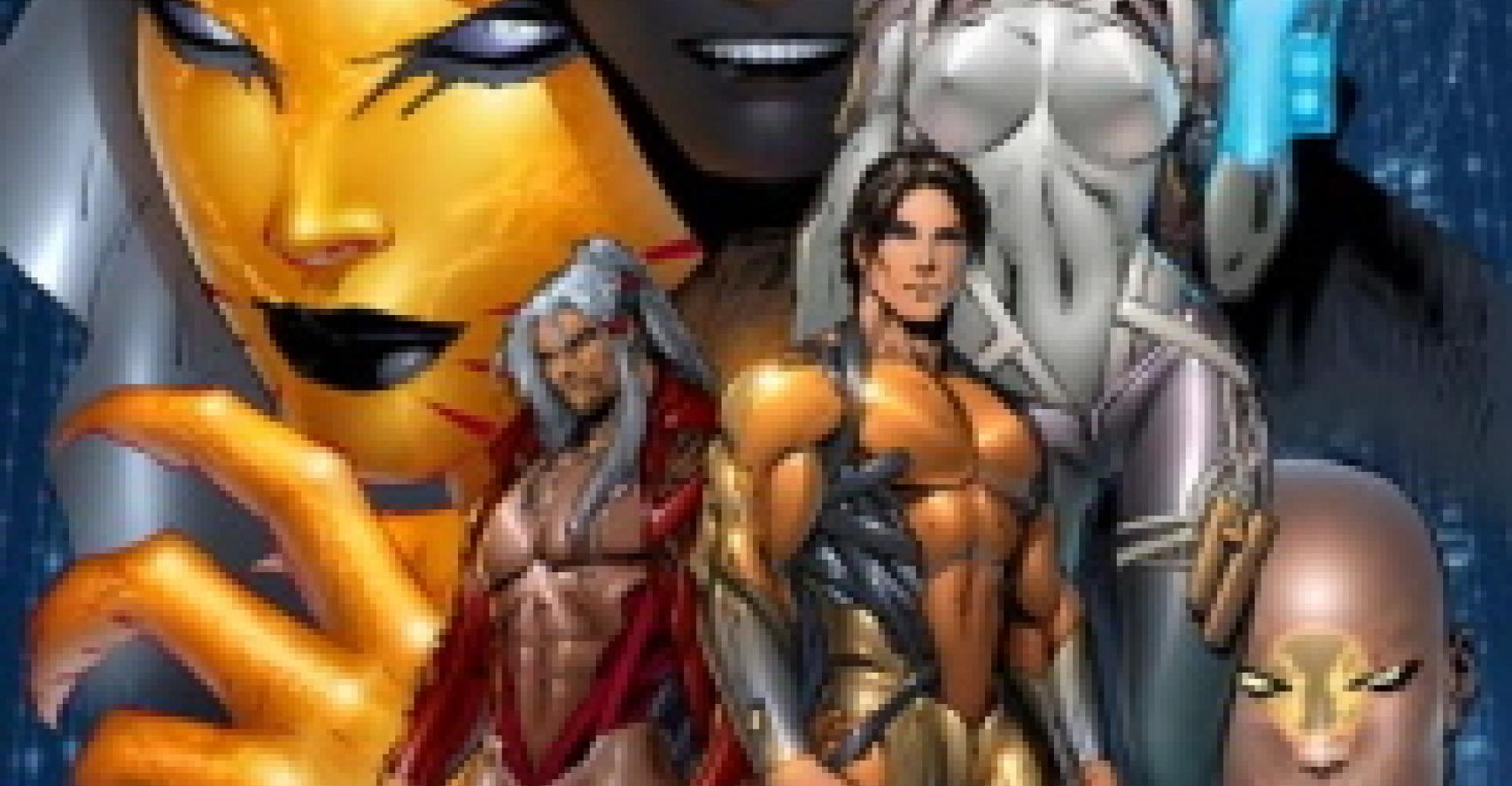Over the past few weeks, my friend John Rogers (creator of the new Blue Beetle and creator of the TNT show LEVERAGE) has been kind enough to let me practice my blogging skills over at his terrific site, Kung Fu Monkey. I’ve been over there doing a weekly series on What I’ve Learned About Writing Comics, and I want to continue that momentum here. Every Thursday, I’ll be posting how-to’s, tutorials, and answering specific questions about craft. Here’s are the links to the previous installments:
Waid Wednesday #2: 101-A (a.k.a. “More Than Words”)
Waid Wednesday #3: Economic Storytelling
Waid Wednesday #4: Artists Are Not Helper Monkeys
Waid Wednesday #5: Rainbow of Confusion
Waid Wednesday #6: Six Qualities of a Hero
Waid Wednesday #7: Follow-Up: Good With The Treasure Hunting, Not So Much With The Treasure KEEPING
And here’s today’s:
When I talk to aspiring comics writers, they’re often most mystified not by the scripting (there are plenty of script books out there) or the language (most anyone who’s interested in doing this for a living already knows what a “panel” is, what “balloons” are, etc.). They’re freaking out because they don’t know where to start. Almost no comics editor will read a spec script cold; whether you’re angling to sell your own series or write for an existing property, you need to start with a Pitch, generally followed by a Proposal.
The Pitch is your first chance to demonstrate your understanding of the Economy Of Storytelling–that you know how to pace a comics story and have some clue as to how much fits on the page. And no editor will have faith that you can squeeze a complete story into a hundred panels if you can’t squeeze your idea into two pages. True story: back when I was on staff at DC, a well-meaning but green freelancer sent me his pitch for his creator-owned series. It was sixty-two pages long. Worse, because this writer was friends with my boss, I was forced to actually suffer through this paper cinderblock, and it was arguably the most miserable experience with fiction I’ve had to this day. I would honestly, truly rather read Moby Dick backwards than crawl through a sixty-two page document that was sixty-one pages too long, and even if it had been filled to the brim with moments of staggering brilliance that would humble Jack Kirby and Alan Moore, I still would never have been interested in seeing it published because I had zero confidence that the writer could demonstrate any sense of economy in his storytelling.
(Footnote: Three years and four editors later, the series was actually published, and I would swear to this day under oath that its eight relentless issues actually weigh more than eight issues of any normal comic.)
The Pitch isn’t about story so much as it is about testing the waters (oh, how clever a metaphor that will appear to be in a moment). A Pitch Document explains, in broad strokes, the characters and the story and the “feel” of it all. (Is it drama? Comedy? Crime? Romance?) Not too much detail is necessary at this point; all you’re really trying to do is gauge the interest of whoever’s reading it. Make it enticing, show confidence, and for the love of Murphy, keep it short. By way of an example, here’s a write-up (done with artist Mike Wieringo and, sadly, declined) that I worked up a few years ago when I was asked to pitch for Aquaman. It is not a perfect example of a Pitch Document if what you’re pitching is your own concept–this document builds on preexisting knowledge of who Aquaman is, basically, and what he can do–but read it for form and feel.
AQUAMAN
Mark Waid/Mike Wieringo
Preliminary Pitch for a One-Shot/August 3, 2003
I am so sick of people making fun of Aquaman that I’m beginning to take it personally. For the last ten years or so, the way we’ve been scrambling to combat Aquaman’s “Dork of the Sea” image–and I’ve been guilty of trying this, too–is by making Aquaman increasingly darker, grittier, and tougher, the brooding, angry king beset with trouble. Each incarnation of the character seems grimmer than the last, to the point where all that’s left for us to do is give him two hooks. And a peg-leg.
Yes, the seas can be turbulent and stormy, but y’know what? Far more often, the ocean is a universal symbol for peace and contentment. It’s a calming influence. If it weren’t, Bermuda would be deserted and Hawaii would be an industrial trade port. It is most people’s “happy place.” Yes, the ocean is the set piece for “A Perfect Storm,” but it’s also the world of “Finding Nemo” and “The Little Mermaid.” I have never yet met anyone of any age who didn’t come away from Sea World envying the guides who swim with the whales and porpoises. I propose we turn this “grim Aquaman” paradigm around for a one-shot and see what happens.
Our POV character in this story is a female marine biologist–and since Aquaman’s turf covers the world, there’s no need to make her American. (In fact, Russian is preferable–I’ve been doing a lot of reading about the culture of Russian courtship, and that could really play in nicely.) At any rate, our biologist–let’s call her Yelena for now–may have heard the name “Aquaman” here and there, but to her, he’s about as real and significant as, say, German football stars are to you and me.
Yelena’s work is done with grungy old equipment and spit-and-bailing-wire technology, the best she has to work with. Her whole world has a gritty feel to it– –so when this bright, blond, shining knight of a man pops out of the water and into her life, she’s addled simply by the contrast. Their paths cross, and she’s drawn into an Aquaman adventure that takes us out on (and under) the water.
Yelena’s not reluctant. To Yelena, this “Aquaman” is, yes, mysterious like the sea–but in a warm, enticing way. To Yelena, he is otherworldly, like a fairy tale character come to life. He rarely speaks (though when he does, he’s staggeringly charming), he lives in the water, and he smiles. Constantly. In fact, at first, Yelena has a nearly impossible time taking him seriously. He’s like a walking cartoon.
And yet…the more she gets to know him, the further she’s drawn out of her world and into his, she’ll come to realize that there’s something going on behind those wide eyes of his. Looking in them, she sees peace and confidence; looking through them, she’s gradually introduced to an underwater world of absolute wonder, a place that is far more colorful and in tune with nature than is her own gritty lifestyle. Once she surrenders to the implausibility of it all, she’s rewarded a thousandfold, and so are we. Aquaman’s joy becomes her joy becomes our joy.
There will be no mocking. NO jokes about how “dumb” talking to fish is. Anyone with a keyboard can make cynical jokes. That’s easy. What’s harder is reminding you why, when you were a kid, you tho
ught the idea of living underwater or riding on the backs of whales WAS cool. We can do that. We can remind you, and Yelena’s awed voice will be there to back us up.
* * * * * *
That’s a sample Pitch Document. Breezy but with some personality to it. Not specific on story but strong on concept. Text broken up into chunks so it’s more inviting to read. Again, you’re just exploring an editor or publisher’s interest at this stage. If they’re intrigued by the Pitch, they’ll ask you to put together a Proposal.
Next: The Proposal



